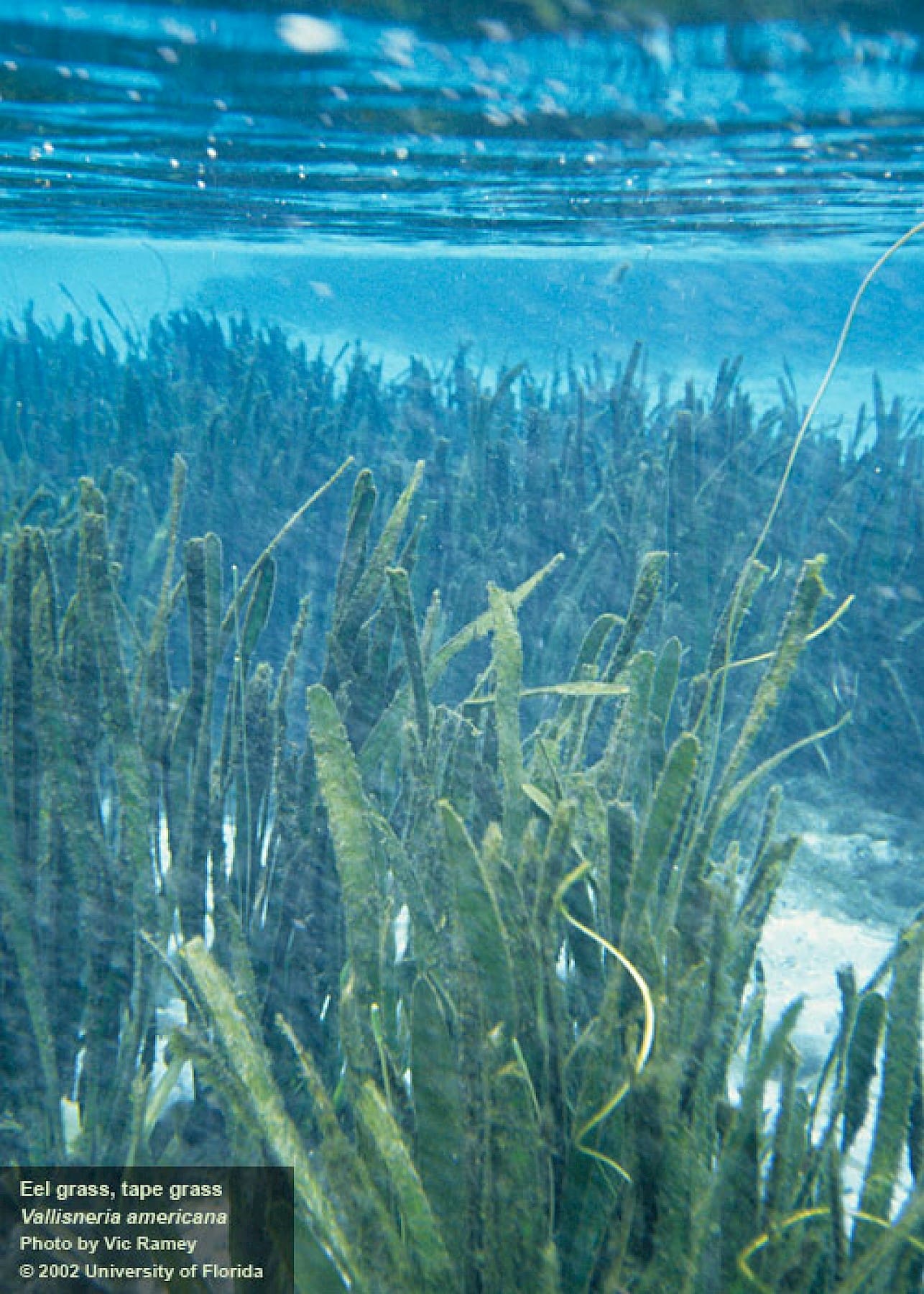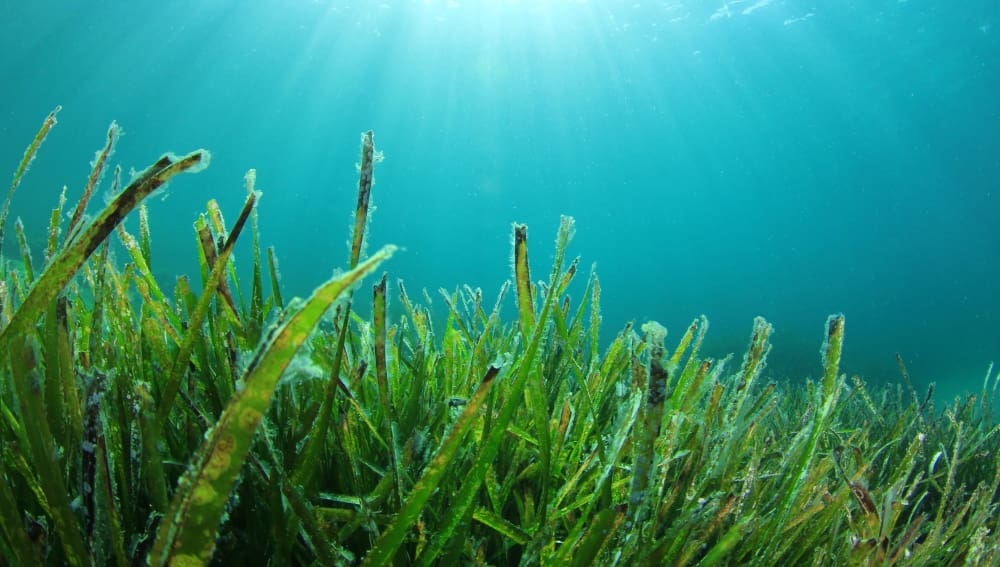In the realm of aquatic flora is a species called Tape Grass, an intriguing entity with a host of unique properties and functions that will be the main focus of this article. Over the course of your reading, you will discover in-depth the nature of Tape Grass, its specific characteristics, ecological role, and its importance to both aquatic ecosystems and human interests. This discussion aims to expand your reservoir of knowledge, giving you a newfound appreciation for this remarkable underwater plant, Tape Grass.

Description of Tape Grass
Tape grass, also known as Vallisneria, is a type of submerged plant commonly found in the world’s oceans and freshwater bodies. This plant group is a member of the Hydrocharitaceae family, which belongs to the class Monocotyledonae under the phylum Tracheophyta. Commonly referred to as eelgrass, wild celery, or water celery, this underwater plant holds significant ecological importance in its natural aquatic environment.
Scientific classification and synonyms
Scientifically classified under the genus Vallisneria, tape grass’s scientific name honors the Italian physician and physiologist, Antonio Vallisneri. There are about six to ten known Vallisneria species, including Vallisneria americana and Vallisneria spiralis. The plant carries several synonyms across different geographies, such as eelgrass, water celery, or wild celery. Its diverse nomenclature reflects its worldwide distribution and wide-ranging habitats.
Physical features
Tape grass is characterized by its ribbon-like, bright green leaves that can grow up to 1 meter in length in optimum conditions. The grass’s stalks are thin and robust, allowing them to sway freely with the current. The plant’s leaves emerge from an underground organ known as a rhizome, a characteristic structure that facilitates the plant’s profuse growth and reproduction. Household aquariums often contain a dwarf variant, ranging from a few centimeters to about 15-20 centimeters in length.
Natural Habitat and Distribution
Tape grass can thrive in a variety of water environments, given the right conditions. It is found in a wide range of habitats, including brackish waters, saltwater habitats, and freshwater locales such as rivers, streams, and lakes.
Habitat conditions
The conditions for tape grass to thrive include clear waters with plenty of sunlight, a soft substrate for rooting, and a relatively mild temperature. While the plant can survive in somewhat turbid conditions, better growth is achieved in clear waters where sunlight can reach the plant.
Geographical locations where tape grass is found
Tape grass is one of the most cosmopolitan aquatic plant species, found virtually worldwide: throughout North America, Europe, Asia, and Tropical Africa, extending as far south as Australia. These resilient plants have also been introduced and naturalized in many areas to which they are not native.

Growth Patterns
Tape grass displays a distinct growth pattern that equips it to survive and flourish in various environments.
Growth rates
Under ideal conditions, Tape grass grows at a swift pace. It sends out runners, which propagate horizontally along the substrate to create new plants, leading to dense underwater meadows.
Reproduction methods
Tape grass uses both asexual and sexual reproduction methods for propagation. It generates new offspring with rhizomes, with each new plant grow from a bud along the runner. Tape grass also flowers underwater, producing long thin stalks that reach the surface and allow pollination by water currents.
Ecological Impact
Tape grass plays a pivotal role in the ecosystems that they inhabit, contributing significantly to the underwater ecology’s overall health and balance.
Role in the ecosystem
Tape grass serves multiple ecological functions. It provides shelter for invertebrates and fish, acting as a sanctuary for their young. Vegetated areas with tape grass limit the erosion of banks by buffering water currents and trapping sediments, thus contributing to water clarity and quality. The oxygen it produces during photosynthesis also contributes to a healthier water environment.
Interaction with other species
The plant provides crucial support to a multitude of jawless fish, insects, and crustaceans, offering both refuge and a rich foraging ground. It’s also consumed by a variety of herbivorous waterfowl and turtles.

Uses and Benefits
Tape grass virtual ubiquity is a testament to its diverse benefits to both wildlife and humans.
Importance for wildlife
Tape grass meadows are vital nurseries for many species of fish and shellfish, protecting their young and vulnerable stages from predators. It also offers a rich feeding ground for various herbivores.
Human usage
Humans have, in many cultures, traditionally used tape grass as a source of fodder for livestock. More recently, with the rise of hobby aquaculture, they are favorite additions to the home aquarium, owing to their hardiness, ease of care, and aesthetic appeal.
Potential Dangers and Threats
Unfortunately, like many aquatic species, tape grass faces several threats, including pollution, invasive species, and climate change.
Challenges and threats faced
Invasive species pose a significant threat to tape grass, often outcompeting them for resources in their habitat. Pollution, particularly high nutrient levels from agriculture runoff and sewage effluent, also poses a severe problem, leading to eutrophication.
Impact of pollution and climate change
Pollution and eutrophication can lead to algal blooms that block light from reaching tape grass. Climate change, too, potentially alters the range of favorable water temperatures, which could have severe impacts on the plant’s distribution and growth.

Conservation Measures
Many measures have been initiated globally to protect and conserve tape grass populations.
Steps for conservation
Key conservation steps include controlling pollution, especially from agriculture and effluent, and managing invasive species. Furthermore, habitat restoration efforts are crucial to replace and reintroduce tape grass to areas it formerly inhabited.
Role of conservation organizations
Conservation organizations play a significant role, guiding and implementing policy and educating the public about the importance of such plants and their conservation.
Cultivation and Care for Tape Grass
Growing tape grass, particularly in an aquarium context, is a rewarding pastime for enthusiasts, provided the plant’s basic needs are met.
Suitable conditions for growth
Tape grass prefers a substrate of fine sand, good lighting conditions, and a warm water temperature. They thrive in environments that replicate their natural freshwater habitats.
Care and maintenance
Maintenance involves pruning overgrown leaves to ensure other plants can access light. It requires a nutritious substrate, sufficient light, and occasional water changes, which will keep the grass healthy and resilient.

Tape Grass in Aquariums
Aquarium enthusiasts often find that nature-based aquascaping is incomplete without adding tape grass.
Usage in aquariums
Tape grass is a popular choice due to its aesthetic appeal and resilience. It’s known to give aquariums a lush green, natural look, and its robust nature also makes it a suitable choice for beginners.
Benefits for aquatic life in aquariums
For aquarium inhabitants, tape grass offers refuge and a place for invertebrates and fish to forage. It also helps maintain water quality by absorbing excess nutrients in the tank.
Research and Studies Related to Tape Grass
Tape grass holds immense scientific interest due to its resilient nature and ecological significance.
Latest research and findings
Recent research is examining how tape grass responds to varying environmental conditions and how these resilient plants adapt to changing climates. Understanding these mechanisms can contribute to future conservation efforts.
Importance in scientific study
Tape grass studies offer insights into plant responses to stress and adaptation strategies to environmental changes. This knowledge is fundamental to both understanding and preserving these valuable aquatic ecosystems. In light of this, protecting these versatile, vibrant underwater forests is not just a matter of conserving a single species but of maintaining the health and diversity of aquatic ecosystems worldwide.